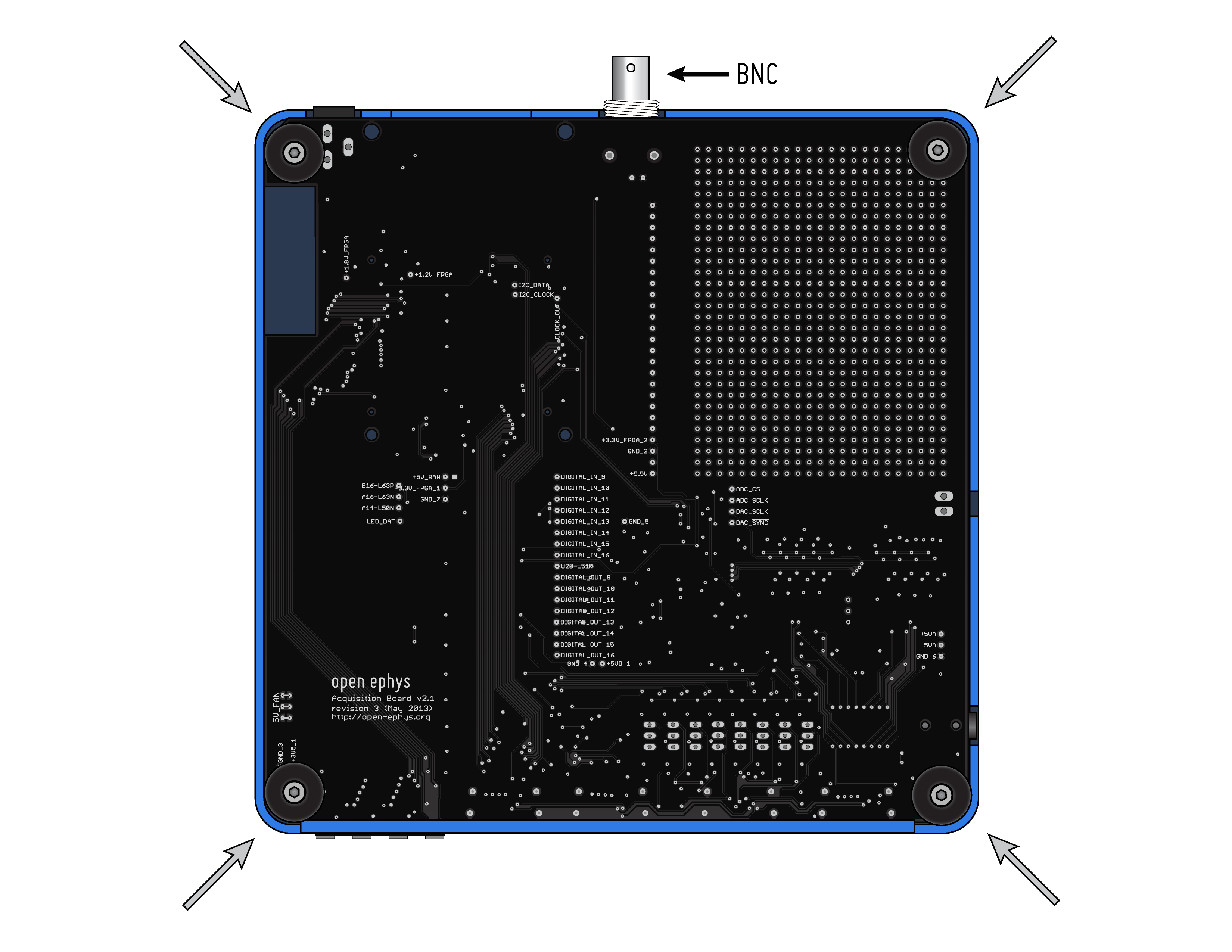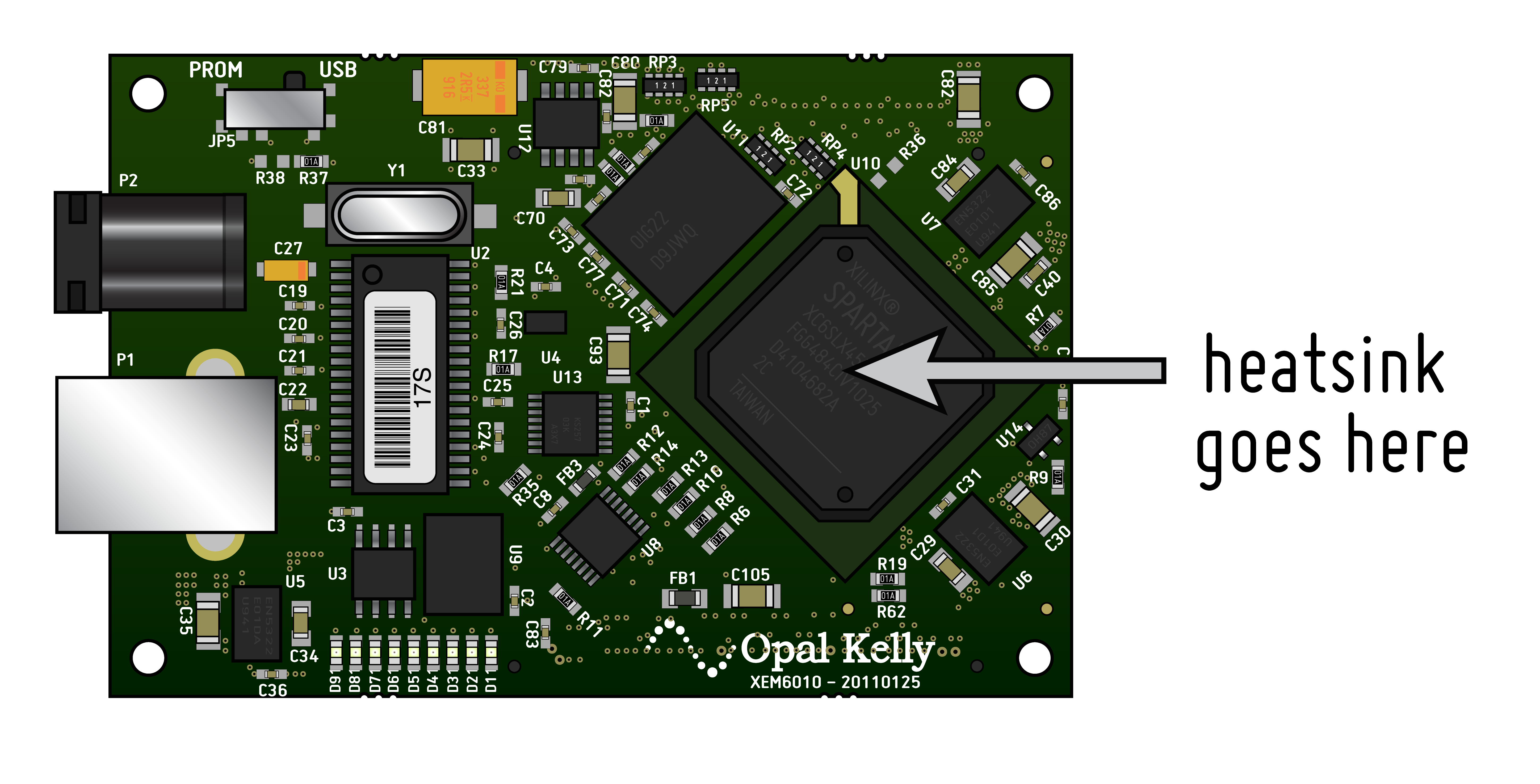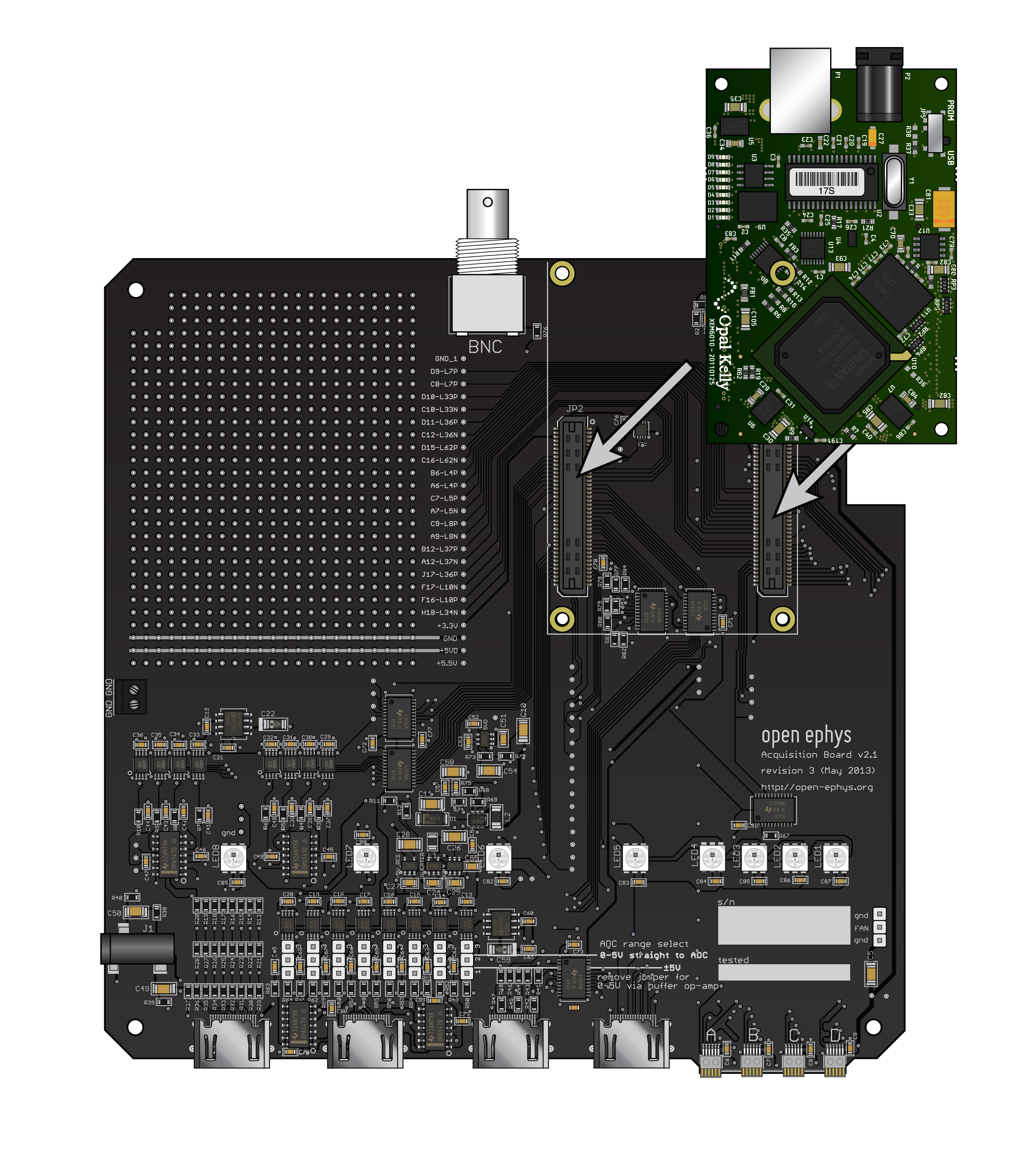Putting it all together#
Installing the FPGA module#
If your acquisition board did not come with an FPGA, or if you built it yourself, you’ll have to buy and install your own. You can get an Open Ephys FPGA module from our store.
Required components: FPGA module, heatsink
Tools: M3 hex key or Phillips screwdriver, depending on your specific board
Flip the acquisition board over and use the hex key to remove the four screws. Some squeaking is to be expected.

Carefully remove the circuit board from the case by lifting the BNC and sliding it out.
Flip the circuit board face-up and place it on a flat surface.
Remove the backing from the heatsink and press it onto the main chip of the FPGA.

Align the connectors on the bottom of the FPGA with the connectors on the circuit board, and press the FPGA firmly into place.

(optional) insert a 3x3x1cm fan into the opening in the case, and connect the fan power cable to the 3-pin fan connector on the acquisition board (polarity doesn’t matter). Fold the cable up so it doesnt loop around the case too much. If the fan is scratching the side of the case, just rotate it 180 degrees, the air flow should be sufficient in either direction.
Assembling the case#
Place the circuit board back into the case, and replace the four screws. To insert the board, first carefully slide the four small headstage connectors through their opening in the case, hold the board at an angle for this step. The HDMI connectors should now easily fit into their openings. Dont force the board in at this stage, if there’s too much resistance, the alignment is likely wrong and you risk bending the pins on the omnetics connectors. Once the front edge is in the housing, just push the board in using the front as a hinge. The FPGA module should easily fit into the four guide posts in the case now.
If you’ve ordered the case in a color other than white, you’ll need to paint the top surface so the glue isn’t visible. We recommend Montana Gold spray paint in Shock White, but any bright white paint will do. Make sure to tape the edges so you don’t get paint on the sides.
Painting the engraved logo on the acrylic top also looks really nice. We recommend a darker color such as black or blue, using either permanent marker, acrylic or spray paint. Paint the logo before you peel off the protective paper backing - this way there’s no way to mess up the logo and you can even use spray paint.
If you’re using cast urethane cases, lightly sand the four corners with fine sandpaper so the glue can adhere well.
After the paint has dried, place four drops of thick super glue near the corners of the case top surface, then put the acrylic in place. Make sure the edges of the acrylic are aligned with the case as precisely as possible.